KEY POINTS:
- Ensure assets records are complete and up-to-date
- Safe working is better working
- Is the chief executive's role too big for one man?
- Strengthen the Network Rail board
- Set out the long-term vision for Network Rail
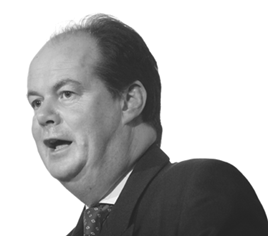 Read the peer review for this feature.
Read the peer review for this feature.
To Sir Peter Hendy, Chairman of Network Rail:
Over the past few years we have spent several happy dinners putting the railway world right, and now you have the opportunity to do just that. I know you will relish the task. This letter is meant by way of a critical friend, and I hope you will take the comments in that spirit.
On March 25 2015, Network Rail published its Delivery Plan for Control Period 5, which contained a paragraph with a warning of “challenges” and the “wider economy”. A cynic might conclude that Network Rail was preparing the way to talk about rising costs and delivery slippage across all its projects, while not fundamentally addressing the need for it to become ever more customer, client and taxpayer-focused.
There appears to be incomprehension inside Network Rail at the outside perception of the organisation.
The internal perception is we’re running more trains, so what’s the problem if they are a few minutes late? The external perception is one of continued failure of performance and time-keeping.
The internal perception is we are doing a large amount of excellent maintenance and upgrading. The external perception is one of continued overruns of engineering every weekend.
This was illustrated by Network Rail’s reaction to Christmas 2014 problems. The internal perception was that only 1% of the works had a problem - the external reality was that of customer disruption and a failed programme.
At the heart of this internal perception problem is a failure to understand the ‘customer’. And it is the ‘customer’ who should be key to the organisation, not the ‘engineer’. When I was Transport Minister I made this point both to NR and in numerous speeches. However, this whole problem is actually much larger, because most customers blame the train operating companies when the vast majority of the failings are actually Network Rail’s.
What this underlines is that a massive culture change needs to happen. If you don’t embed that change, all else will be impossible.
Network Rail needs to remember that it is not their railway, and that maintaining the railway is not in an end in itself. The only point of a railway is to move people and freight from one place to another economically and efficiently. The new mantra must be: “It’s the customer that counts.”
Operationally, Network Rail’s primary role is to provide the infrastructure that enables a railway to be provided. So in essence, it is a network infrastructure and engineering company, with the requisite skills being asset management and maintenance, enhancement, repair and renewal of the existing infrastructure.
Its second role is to provide a continuous system that allows the flow of traffic, which requires route management such as signalling and programming skills.
Many industry commentators are concerned that knowledge of the state of the asset base is not good enough, which in turn leads to a skewed estimate of what volume of work is achievable in any period. This criticism may or may not be fair, but I think that you need to reassure yourself that the NR record of its assets and their state is complete and up to date. Challenge number one!
The solution for Network Rail was always simply to ask the taxpayer to pay more - or simply add to the existing debt. It seemed to believe that while throughout the rest of government the mantra was “more for less”, it was acceptable for Network Rail to do ‘less for more’ in terms of value delivered. Yes, there have been savings in terms of direct costs, but the amount of work delivered for what has been spent has steadily declined, as a result of dreadful efficiencies.
However, the initial enthusiasm to bring down costs turns into inertia, and the suggestion is that opportunities are limited. Moreover, the idea that some of the work could be slipped into Control Period 6 seemed to be acceptable.
At least in the operational side of the operation, from a change in culture and a complete asset record will flow a realistic assessment of volume and a sensible prioritisation of those works achievable in Control Periods. I am especially alarmed by the Great Western electrification programme, where over the past few weeks I have heard about possessions where only a single lineside mast was erected, or where worksites were marked out and possessions taken - but no work done at all.
NR’s health and safety record, while not poor, is not as good as Transport for London’s. Nor does NR seem to have embraced some of the internationally accepted practices. I know that you know and accept that excellence in health and safety and delivery of maintenance, far from being competing, are actually mutually compatible and essential. Safe working is better working. Another challenge for you!
There is a widespread view that despite Mark Carne having the right approach to re-shaping the company, the tsunami of issues that keeps hitting him has not allowed him to progress either operational discipline or a blueprint for a Digital Railway. Carne is intelligent and committed, yet the question must be: is the current Chief Executive role too big for one man? Another challenge.
The thread running through all these challenges is that although there are many who aspire to lead, there are very few (if any) with authority. This gap must be filled by you! Although the NR Board has been strengthened, there is a real need for further quality in terms of your deputy. Might I suggest using the talents of the recently retired Len Porter in some capacity? Another challenge!
It is now almost a quarter of a century since the privatisation of the railways. The proposed structure was designed for a declining industry, and to take a cost base out of the Treasury at a time of slow economic recovery. The reality was that the outcome of the privatisation was unknown. Of course, history shows anything but a declining industry - rail is thriving, with the number of passenger journeys doubling.
The future is likely to feature sustained demand increases, signalling and train control system upgrades, an intention to move to a digital railway, increasing passenger quality and reliability demands, high speed lines, community rail, electrification and financial restraint. It is hardly surprising that a structure dating back 20 years, and designed with managed decline in mind, is now not fit for purpose.
All industry structures need reassessment. Therefore, it is not surprising that a structure that is over 20 years old and designed for the wrong industry model is under pressure, and needs to be re-evaluated.
Network Rail is the son of Railtrack, but without the discipline of equity. Many deride the failings of Railtrack, but fail to recognise that the British Rail maintenance regime may or may not have been excellent in an application that was too limited in its reach (not enough track upgrades were done for 50 years post-World War Two). Hence Railtrack was pilloried for its failings, and Network Rail was born without the real source of the problem being acknowledged.
The challenge for NR is to operate in the present, but plan long term. I am sure by now you will have come to the conclusion that many of the operational challenges, and the solution to how long Network Rail remains on the balance sheet of the Government, can be resolved only by considering what its long-term future should be.
Firstly, the Network Rail Framework Agreement set out by the DfT last year needs to be ditched. This document is the proverbial curate’s egg. However, where it is good it is obvious (special director, new governance), and where it is bad it is truly dreadful (daily cash flow reporting and the introduction of ‘double jeopardy’ in analysis of decision and cost review).
While we are talking about change of industry structure, perhaps it is time for a clean sweep. The purpose of the Rail Delivery Group is increasingly unclear, and it is not surprising that it has achieved little. Also, if we are to initiate change for Network Rail, it is time to review how the regulator works. The changes in structure of the industry I outline below require a regulator more along the lines of the water, gas, electricity and airport industries, rather than the current ORR.
So to the long term: the removal of stations from Network Rail is laudable, as is the tendering of some electrification contracts to outside bodies. But this will appear timid and merely tinker at the edges. There are two obvious long-term solutions to Network Rail that would prepare and structure both the company and the industry for the future.
The first solution is to split Network Rail into two or four companies. As stated previously, the current factions undertaken by Network Rail fall into about four headings: Asset Management; Network Operations; Infrastructure Project Management; and Commercial Property.
This split will give clarity of role, management, accountability, governance and financial management. It will allow the varying companies (either two, combining the first two functions into companies, or four) to meet the challenges for the next 25 to 50 years. It will allow culture change within the industry, focusing on the needs of the customers.
The second option is to vertically re-integrate the industry into between four and six regional operating companies, with a long-distance route company operating East Coast, West Coast and Great Western.
While this would require initial greater upheaval and a reshaping of the franchise system (such that they are awarded or reallocated to fit the new operating companies), it is likely to deliver many of the operational and financial advantages as per the model above. These new companies should be established on a long-term concession model, which again has additional advantages in terms of financial structure and of investment (especially network spending and rolling stock). This model also delivers clarity of responsibility.
The last government was characterised by bold decisions and financial commitment to infrastructure, despite the difficult financial position. The Chancellor, unlike so many of his predecessors, has remained committed to the belief that a high quality infrastructure is essential for increases in a country’s economic growth, and was prepared to make the resources available.
Ossification is the enemy of progress. A structure established more than a quarter of a century ago is unlikely to answer the challenges of the future. Change is the only option, and the two long-term solutions outlined above are the only realistic alternatives.
So Sir Peter: be bold, change the culture, enforce the necessary operational change, and set out the long-term vision for Network Rail and the industry. Bonne chance!
Read the peer review for this feature.
 Peer review: David Simpson
Peer review: David Simpson
Production and Safety Director, Caledonian Sleeper
Stephen Hammond’s letter calls for a clean sweep of industry structure, supported by some insightful comments on why this is necessary. In reviewing the justification there are some areas which merit further analysis.
The letter calls into question the ability of Network Rail to understand the customer. From my experience of working at Network Rail, and in dealing with them as a customer in an FOC and now a TOC, most people within Network Rail - especially at Route level - are very motivated to understand customer needs and deliver those as well as they can. But there can be a lack of real understanding about what customers really need; and even where this is present, the labyrinth of processes which must be observed to get even simple things done can make delivery much slower than customers require. Equally, the multiple priorities which are often present within Network Rail can mean it is seen as more important to deliver an ORR milestone than a customer need, as the former can have consequences whereas the latter often doesn’t – and these two things are often not aligned as well as they might be.
While promoting the mantra ‘it’s the customer that counts’ is good, this MUST be backed up by giving teams across Network Rail the ability to deliver to customers more effectively. Despite sporadic efforts over the years, there is still a lack of real challenge to processes and standards which drives unnecessary cost and time into projects. Aligning incentives is critical so that success for the customer means success for Network Rail.
Turning to the proposals on structure – the success of the past few years in driving growth in use of the network has been achieved in a very fragmented, complex and contractually driven environment – and often in a world of constant change, whether that is driven by franchise change or other reorganisation. The best results seem to have been achieved where there has been more stability, which has enabled longer-term relationships to be established between key parts of the industry – Scotland, Chiltern, c2c and Merseyrail are good examples. This has been the case especially where devolved government has allowed for a degree of closer alignment – and in particular where there has been flexibility for the industry to react to changed circumstances. Five-year Control Periods have been a great comfort in respect of funding for the industry, but there is a need to be able to react to new opportunities, and markets, whether freight or passenger, outside of the straitjacket of regulatory outputs which can drive behaviours that are less customer focused.
Stephen suggests ideas for change which perhaps cut across my point that stability has yielded the best results. Both of his solutions for restructuring Network Rail create the challenge of balancing the opportunity to be more responsive locally, finding ways to respond to customer needs cheaper and faster, against creating even more complexity and transactional activity than the current structure imposes. The vast majority of TOCs and FOCs operate over more than one route, and whether Network Rail is split geographically or functionally, more interfaces would be created, all consuming more management time internally instead of devoting time to serving the real customers, fare payers and freight users.
Change may be the only option – but not for change’s sake! Put the real customers at the heart of decision-making, align industry incentives – and then decide the best way to deliver those. That will deliver the massive culture change that Stephen Hammond correctly calls for.

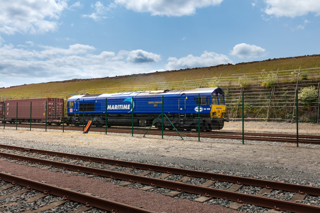
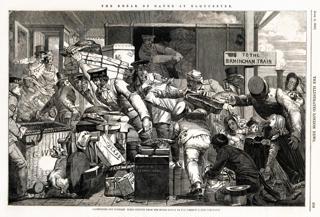
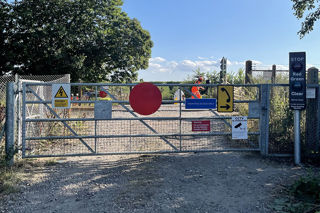
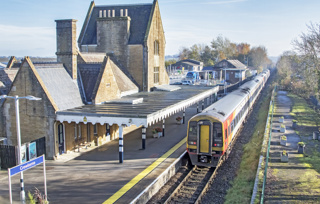
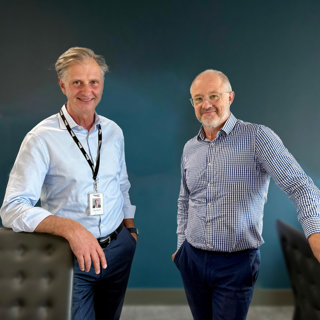

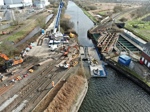







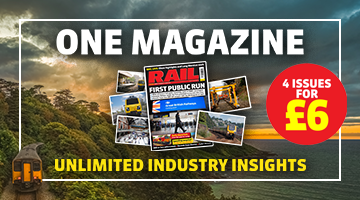

Login to comment
Comments
No comments have been made yet.